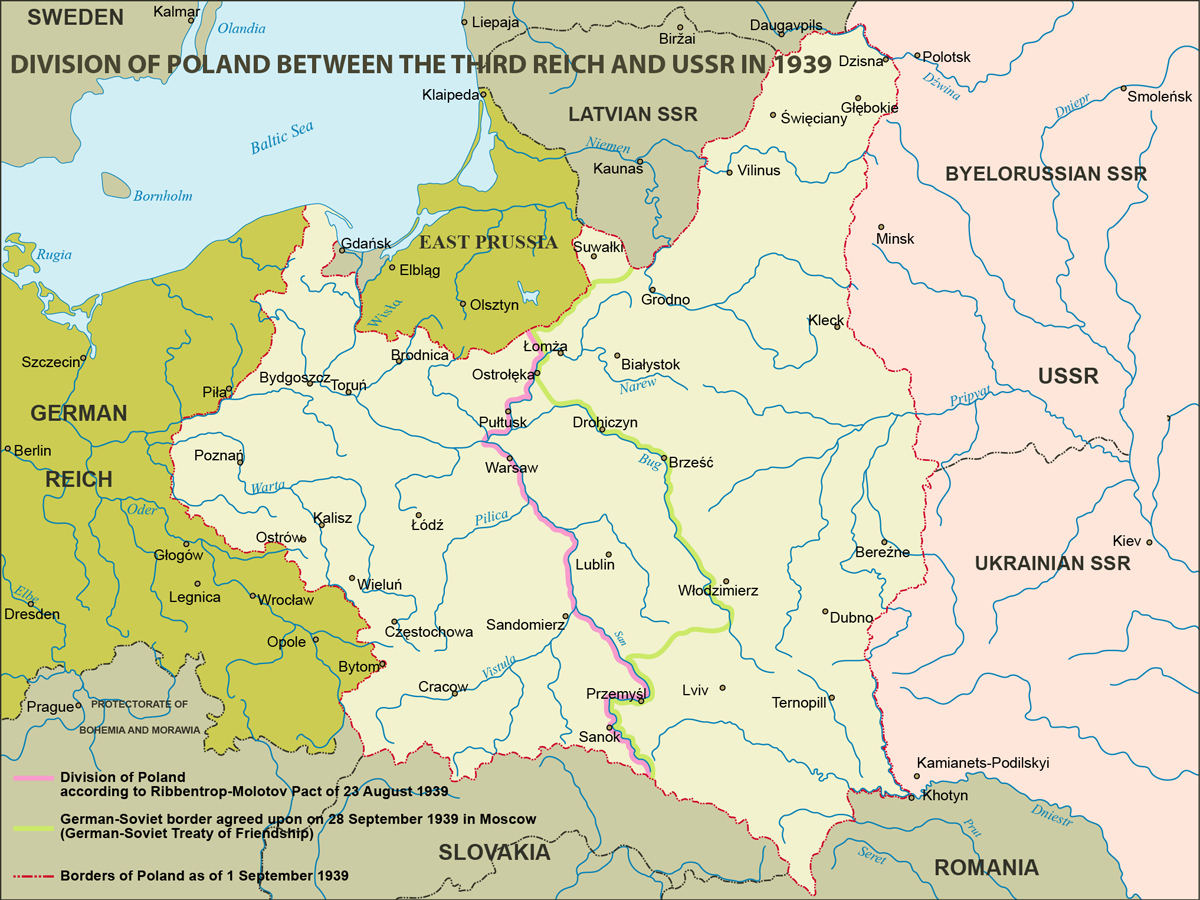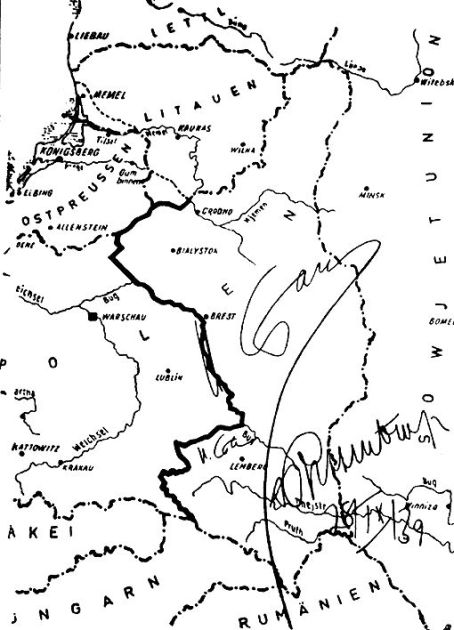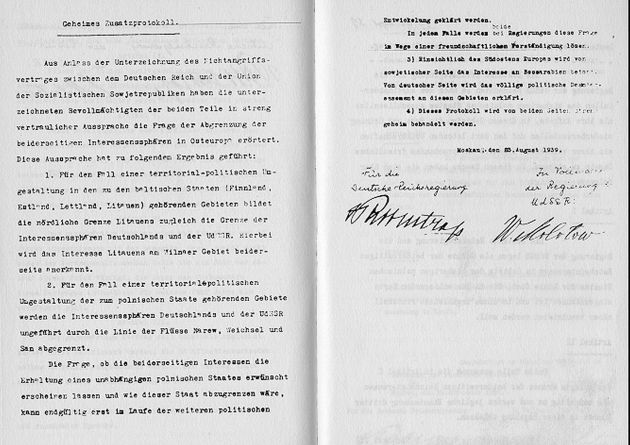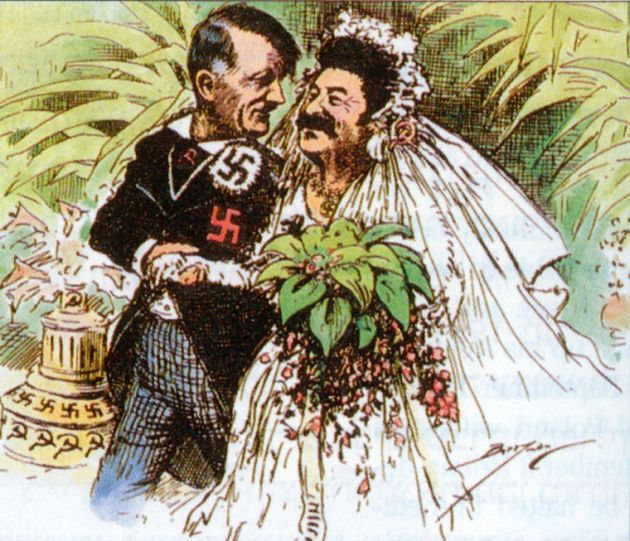Thanks to his cunnig foreign policy, Hitler was able to deceive the international community for long enough, so that when efforts were finally undertaken to create an anti-German bloc, it was already too late. Hence British and French efforts in the spring of 1939 to invite the Soviet Union to cooperation against Germany ended in failure. Instead on 23 August 1939 a non-aggression pact was signed in Moscow between the German Reich and the Soviet Union, commonly known as the Molotov-Ribbentrop Pact—after the names of the foreign ministers of the two states. This treaty included a secret protocol dividing into ‘spheres of influence’ territories between the two states in the eventuality of ‘territorial and political rearrangements’. The territories the new allies divided between themselves included Poland, Finland, Estonia, Latvia and Lithuania as well as Romanian Bessarabia. Polish lands to the west of the Narew-Vistula-San line were to fall under the German sphere of influence, whereas those to the east of this line were supposed to go to the Soviet Union. Stalin felt he delayed the threat of a German attack, whereas Hitler no longer had to fear a conflict with the USSR if Germany invaded Poland.




